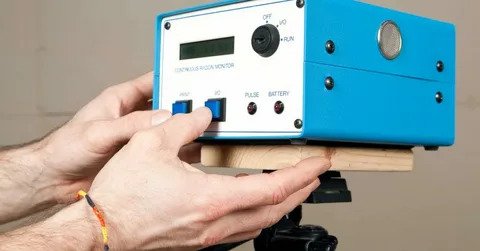When we talk about home safety, most people think of locks, smoke detectors, or maybe even security cameras. But there’s a hidden danger that doesn’t get enough attention—radon. Making radon testing part of your home maintenance plan can literally save lives. Whether you choose a DIY radon testing guide, hire certified radon inspectors, or schedule a professional radon testing service, knowing your home’s radon levels is critical to your health.
What Is Radon and Why Should You Care?
Radon is an invisible, odorless gas that naturally forms from the breakdown of uranium in soil, rock, and water. It seeps into homes through cracks and gaps in the foundation. Long-term exposure to high radon levels is the second leading cause of lung cancer in the U.S., after smoking.
Scary, right? That’s why radon testing isn’t optional—it’s a must.
Who Needs Radon Testing?
Radon doesn’t discriminate. Whether your home is old or new, has a basement or a crawl space, it could be at risk. Homeowners, renters, and especially people buying or selling a property should all consider testing.
Benefits of Regular Radon Testing
- Peace of mind: Know your indoor air is safe
- Health protection: Prevent long-term exposure risks
- Smart homeownership: Identify problems before they escalate
- Property value: Radon-safe homes are more marketable
DIY Radon Testing Guide
Yes, you can test your home yourself! A DIY radon testing guide usually includes:
- Buying a test kit – Available online or in hardware stores
- Placing the detector – Usually in the basement or lowest living area
- Following instructions – Keep windows closed and don’t move the kit
- Sending results to lab – Prepaid envelope included in most kits
- Waiting for analysis – Results arrive in a few days to a week
DIY tests are affordable, easy, and great for an initial check. Just be sure to follow directions exactly.
Limitations of DIY Testing
While convenient, DIY kits have their flaws. Factors like placement, humidity, or user error can affect accuracy. That’s where certified radon inspectors shine—they use commercial-grade tools and know what to look for.
Why Hire Certified Radon Inspectors?
Certified radon inspectors have the training and credentials to conduct reliable, accurate radon measurements. Here’s what you get when you hire a pro:
- Precision testing tools
- Knowledge of local radon patterns
- Clear explanations of results
- Tailored mitigation recommendations
If your DIY test shows high levels, a professional test can confirm and guide next steps.
Radon Testing Service Details
Professional radon testing service includes:
- Initial consultation to assess your home
- Strategic detector placement in high-risk areas
- 48-hour or longer monitoring period
- Digital or lab-based analysis
- Comprehensive reporting with next steps if needed
This option is ideal if you’re buying/selling a home or want certified documentation for peace of mind.
How Often Should You Test for Radon?
Experts recommend testing your home:
- Every 2 years
- After major renovations
- If you move into a new house
- When installing a new HVAC or ventilation system
Radon levels can change over time due to soil shifts, construction, or weather, so regular checks matter.
Understanding Your Test Results
Radon is measured in picocuries per liter (pCi/L). According to the EPA:
- Under 2 pCi/L = Low concern
- 2–4 pCi/L = Consider mitigation
- 4 pCi/L and above = Mitigation strongly recommended
A radon testing service will explain these numbers and help you decide what to do next.
Radon Mitigation: What If Your Levels Are High?
Don’t panic. High levels don’t mean your home is unlivable. Mitigation systems are effective and usually involve:
- Installing a vent pipe and fan system
- Sealing foundation cracks
- Improving ventilation
Your certified radon inspector or mitigation specialist will walk you through options.
Costs: DIY vs. Professional Testing
- DIY kits: $10–$30
- Professional service: $150–$400
The investment is minor when compared to the cost of potential health issues. It’s a small price for peace of mind.
Why Radon Testing Is Essential for Real Estate
If you’re buying or selling a home, radon testing can make or break a deal. Buyers are increasingly aware of indoor air quality and may request a radon report. Sellers can boost credibility and transparency by testing before listing.
How to Find a Reliable Radon Testing Service
Look for:
- State certification
- Good reviews and references
- Clear service scope and pricing
- Timely reporting
A trustworthy provider will explain the process, results, and what to do next without pushing for unnecessary extras.
Radon Testing for Apartments and Rentals
Even if you don’t own your home, you deserve a safe living environment. Ask your landlord about previous radon tests. If none were done, consider using a DIY radon testing guide or request professional testing.
Conclusion
Ignoring radon is like ignoring a silent alarm. It may not seem urgent, but its impact on your health is real and long-term. Whether you’re using a DIY radon testing guide, seeking help from certified radon inspectors, or hiring a full radon testing service, taking action now will protect your home and loved ones. Make it part of your safety checklist every season—you’ll breathe easier knowing your air is safe.
FAQs
1. Is radon testing required by law?
Not in most states, but it’s highly recommended, especially during real estate transactions.
2. Can I install a radon mitigation system myself?
It’s possible, but professional installation ensures proper function and safety.
3. How long does a radon test take?
Short-term tests typically take 2–7 days, while long-term tests can span 90+ days.



